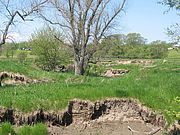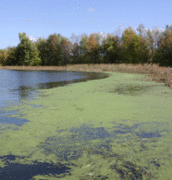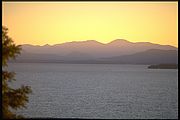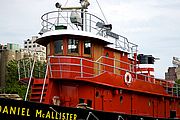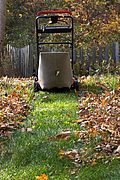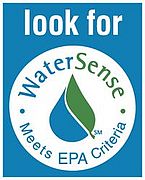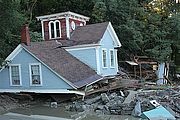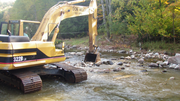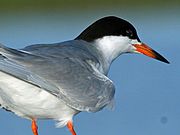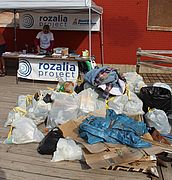In 2011 LCC completed five years of monitoring at a stream restoration site in St. Albans. Rugg Brook was targeted for restoration following an LCC assessment of the watershed. Prior to restoration, the stream had cut up to 11 feet deep into a pasture; the banks of the stream were slumping and eroding, delivering tons of sediment to St. Albans Bay. MORE Read...
News from Selected Month
LCC completed its ninth season of blue-green algae monitoring on Lake Champlain. In 2011, volunteers collected 172 samples and there were 29 low alerts and two high alerts issued during the ten weeks of citizen monitoring. MORE Read...
(Adapted from an AP report)
A science program at the University of Vermont has been awarded a $20 million federal grant, the largest grant in the school's history, to help study the health of the Lake Champlain basin and look at the effects of climate change on it, officials announced recently. MORE Read...
Commercial divers recently reached the shipwrecked tugboat McAllister to assess whether it still contained diesel fuel from when it sank in 1963. The wreck sits in about 165-feet of water off Schuyler Reef. The tug was carrying diesel fuel when it sank and had a capacity to hold up to 14,000 gallons of fuel. MORE Read...
Piles of autumn leaves left in the road can become part of the stormwater problem for the lake. Help keep our waters clean by sweeping or raking leaves away from roadways. Mulch them with a few passes of the lawnmower so the nutrients left in the leaves go back to your lawn instead of into the lake. Read...
Installing a WaterSense labeled aerator to your faucet is one of the most cost-effective ways to save water. Also consider replacing the entire faucet with a WaterSense labeled model. Either way, you can increase a faucet's efficiency by 30 percent without sacrificing performance. MORE Read...
Under any scenario events like Tropical Storm Irene and the spring floods of 2011 will be extreme outliers; however, climate models do predict we should expect and prepare for more intense storms in the years to come. MORE Read...
Tropical Storm Irene will shape our thoughts about and relationship with rivers for at least a generation. A previous generation reacted to the floods of 1927 by straightening and berming rivers and dredging sediments. Bulldozers ran down the rivers shoving stones aside. MORE Read...
The sandbar at the mouth of Mill Creek in Port Henry is covered with loafing birds, white balls of feathers in various states of repose. Most are ring-billed gulls with a few other gulls mixed in, but two birds in particular stand out. They are the same size as the gulls with similar white plumage, but they have bright orange bills and a swept-back black crest like they just came from the salon. These are Caspian terns, one of three species of terns that can be found on Lake Champlain. MORE Read...
Thanks to the lake lovers who joined the Rozalia Project, LCC and other lake partners in a September cleanup of the Burlington waterfront! The afternoon effort removed 1,500 items and 408 pounds of debris along a half mile of shoreline. MORE Read...
This week, the Environmental Protection Agency and the Vermont Department of Environmental Conservation will host important meetings on the re-writing of the Lake Champlain Phosphorous Total Maximum Daily Load or TMDL - the phosphorus reduction budget. The meetings will focus on the northern portion of the Lake Champlain Basin. A second set of meetings are planned for November 14-18 for the southern portion. MORE... Read...

